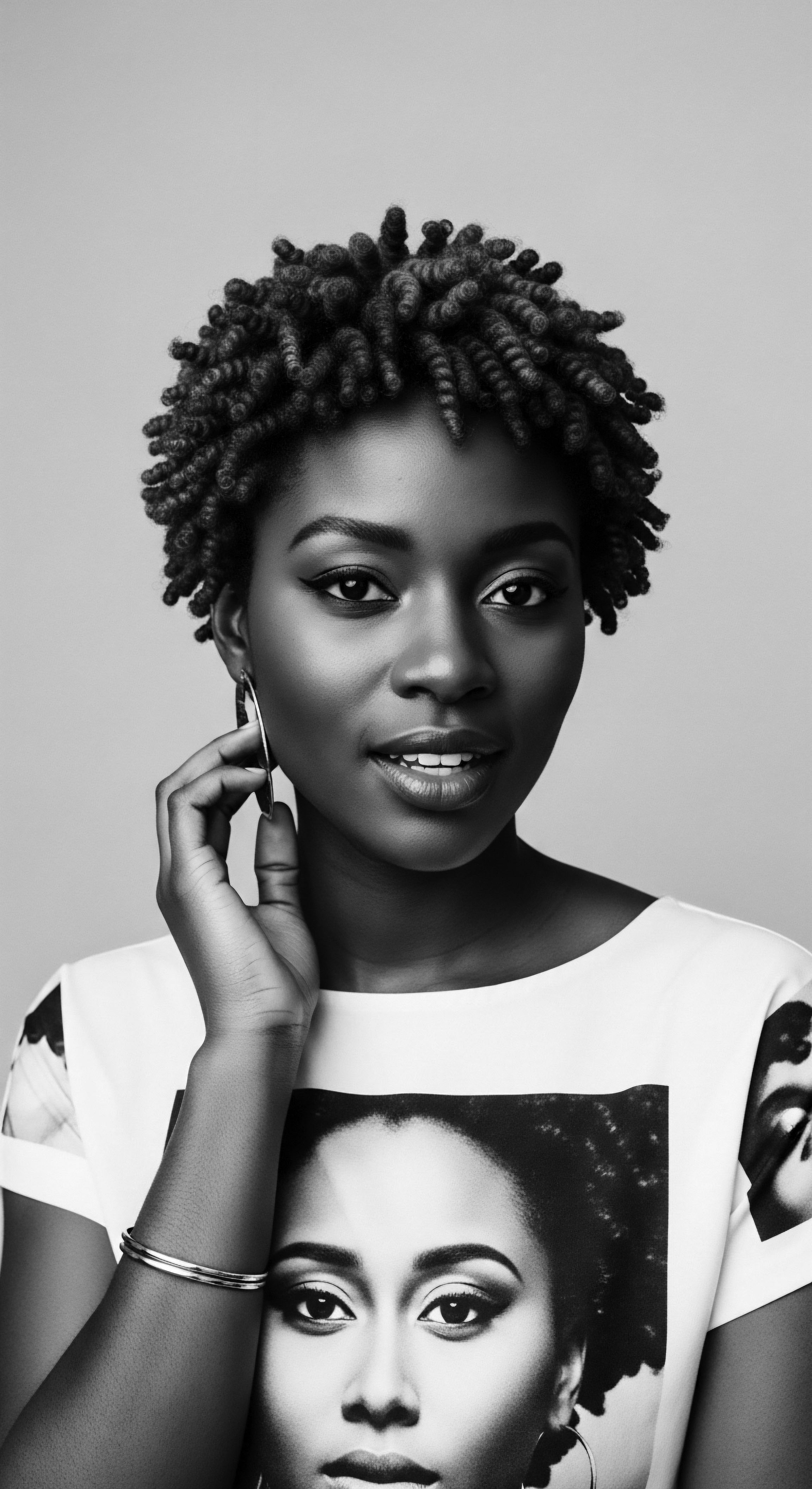
Roots
To truly speak of textured hair is to speak of lineage, of stories held within each coil and wave, passed down through generations. For those whose strands dance with the ancestral patterns of Africa and its diaspora, the quest for moisture has never been a mere cosmetic concern. It stands as a deep conversation with heritage, a practical daily act steeped in survival, beauty, and resilience. This exploration journeys into the very essence of how ancient techniques brought vital moisture to textured hair, securing not just softness, but identity, health, and a profound connection to the land and its wisdom.
The unique architecture of textured hair, characterized by its elliptical shape and varied curl patterns, naturally presents challenges for moisture retention. The bends and twists along the hair shaft create points where the cuticle can lift, allowing moisture to escape more readily than in straighter hair types. Moreover, the natural oils produced by the scalp, known as sebum, often find it more difficult to travel down the spiraling length of a textured strand, leaving the ends particularly vulnerable to dryness. Ancestral communities, with their intimate knowledge of the natural world and keen observation of hair’s behavior, devised ingenious methods to counteract this inherent tendency towards dryness, methods rooted in centuries of empirical understanding and cultural practice.

How Does Hair Anatomy Influence Moisture?
Understanding the fundamental makeup of hair offers a lens into why certain ancestral practices proved so effective. Each strand, composed primarily of a protein called keratin, possesses three layers ❉ the outer cuticle, the middle cortex, and the innermost medulla. For textured hair, the cuticle, a layer of overlapping scales, does not lie as flat as it might on straight hair. This structural difference, while contributing to the hair’s unique volume and spring, also means that the cuticle is more exposed.
This exposure permits moisture, derived from water and humid environments, to leave the hair shaft with greater ease. Conversely, this very characteristic also means that textured hair can absorb water quickly, a double-edged sword requiring deliberate sealing strategies.
The journey of moisture into the hair, and its subsequent retention, relies heavily on the integrity of this cuticle layer and the presence of humectants and emollients. Ancestral wisdom, perhaps without the lexicon of modern science, intuitively understood these principles. They recognized that a well-nourished strand, supple and protected, would hold onto its vitality longer, even in arid climates. This recognition guided their choices in botanicals and methods.

Early Classifications and Hair Language
Long before scientific classification systems came into being, African communities possessed their own sophisticated ways of describing and categorizing hair. These systems were not based on numerical patterns but rather on social meaning, spiritual significance, and practical function. Hair types were often associated with tribal identity, age, marital status, or social standing. A particular style, a specific texture, could communicate volumes.
For instance, among the Yoruba people of Nigeria, intricate braided patterns could denote social hierarchy. This collective understanding of hair, its diverse expressions, and its deep societal value inherently meant that care practices were tailored and precise, ensuring each strand maintained its health and cultural significance. This historical context underscores that hair care was never a one-size-fits-all approach but a deeply personalized ritual informed by collective heritage.
Ancestral approaches to textured hair moisture stemmed from an intuitive understanding of its unique structure and the need for protective care.
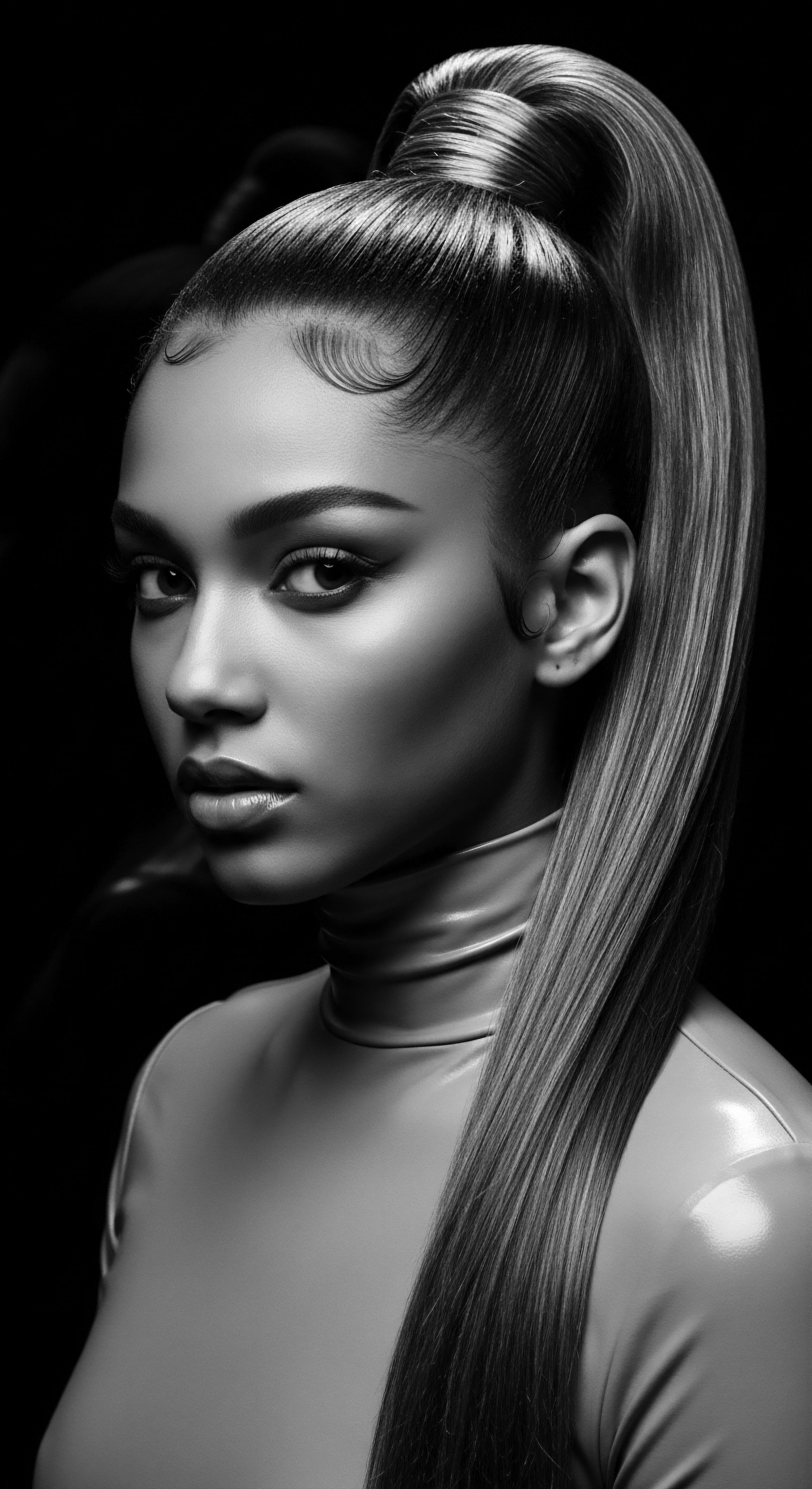
Hair Cycles and Environmental Considerations
Human hair undergoes natural growth cycles ❉ anagen (growth), catagen (transition), and telogen (resting/shedding). Ancestral techniques often harmonized with these cycles, advocating periods of rest and protection for the hair, allowing it to regenerate without undue stress. Moreover, the environmental conditions in many ancestral homelands – the intense sun, dry winds, and sometimes scarcity of water – necessitated hair care solutions focused on shielding the hair from dehydration.
Traditional practices aimed to minimize exposure to harsh elements, to reduce manipulation that could lead to breakage, and to replenish lost moisture with natural emollients. The choice of protective styles and the regular application of rich butters and oils were direct responses to these environmental realities, a testament to practical wisdom refined over millennia.
The very ingredients chosen by these communities were often those readily available in their local ecosystems, proving to be biologically compatible with the hair and scalp. These plants, fats, and minerals, used for generations, became intrinsic to the hair care lexicon, each serving a specific purpose in maintaining the hair’s vitality and moisture balance.
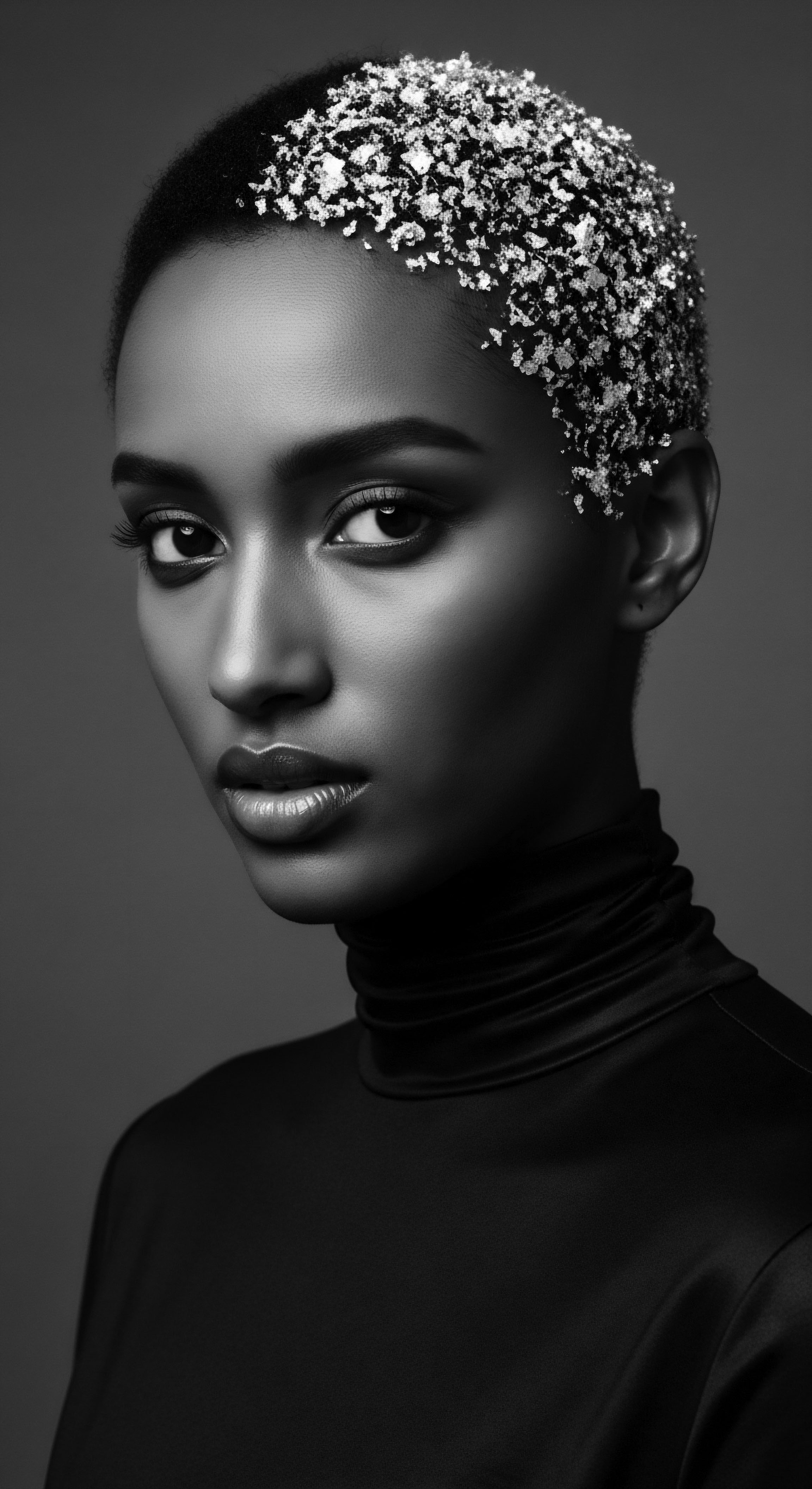
Ritual
The very act of caring for textured hair in ancestral communities was rarely a solitary task; it was a communal ritual, a shared moment of connection and knowledge transfer. The hands of elders, mothers, and sisters worked in unison, passing down not just techniques, but the spirit of continuity and belonging. These practices, far from being simplistic, involved a nuanced understanding of how to cleanse, condition, protect, and adorn the hair while always prioritizing its inherent thirst for moisture. They reflected a profound respect for hair as a living extension of self and a marker of collective identity.
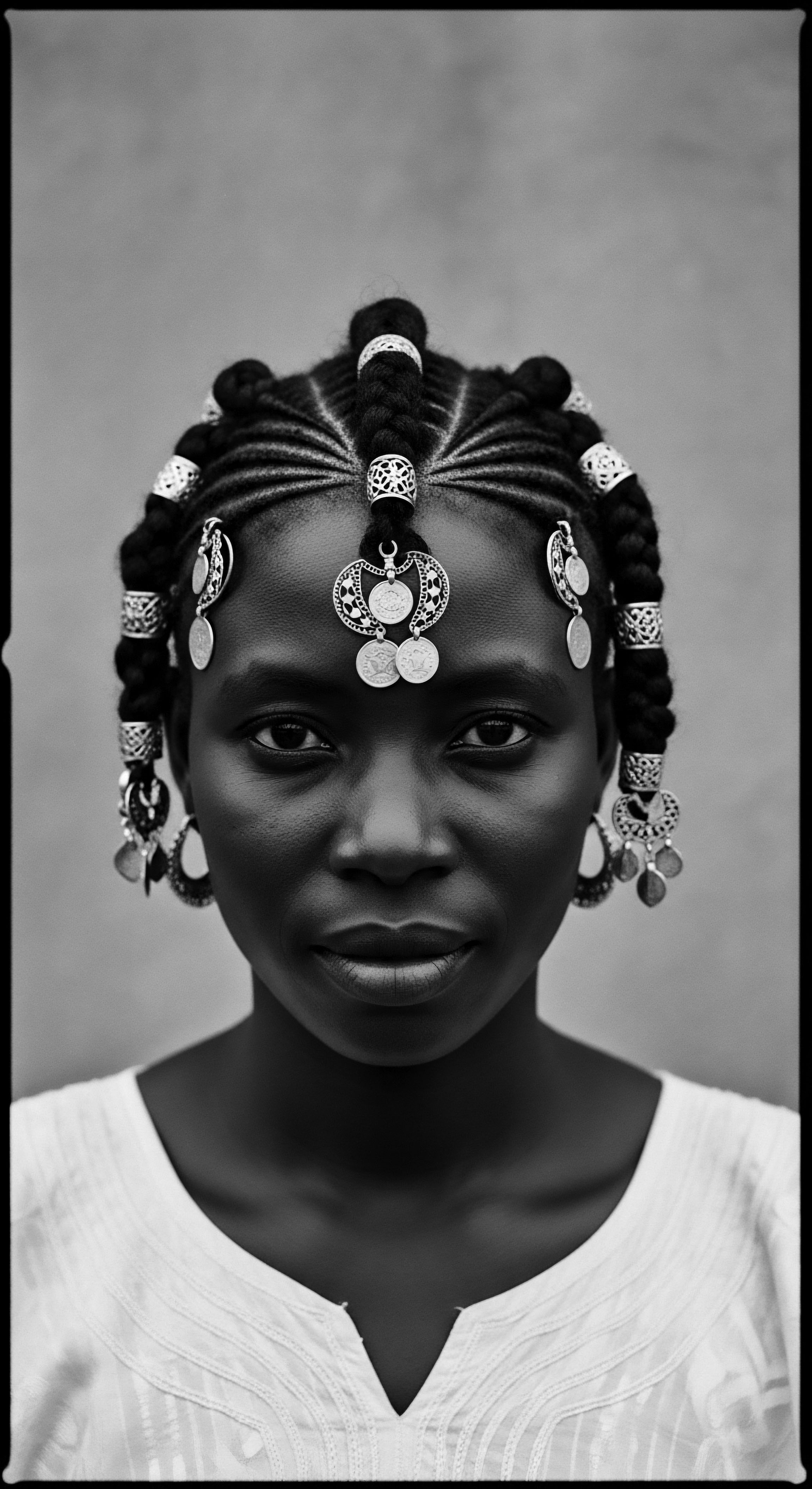
Protective Styling as Moisture Keepers
One of the most powerful ancestral techniques for retaining moisture was the widespread adoption of protective styles. Braids, twists, and various forms of coiling were not merely aesthetic choices; they served as ingenious barriers against environmental elements, reducing exposure to sun, wind, and daily manipulation. When hair is gathered and secured, its delicate ends, the oldest and often driest parts of the strand, are tucked away.
This minimizes friction against clothing or other surfaces, which can strip moisture and cause breakage. The Himba women of Namibia, for example, apply an ochre paste to their coils, which acts as a protective layer, shielding their hair from the harsh desert sun and dry winds.
- Cornrows ❉ Historically, and as early as 3000 BC, these tight-to-the-scalp braids, known in many West African cultures, served both as communication and protective style, sealing moisture within.
- Bantu Knots ❉ Originating from the Zulu tribe, these coiled buns were used to set hair, retain moisture, and define natural patterns, minimizing daily styling and exposure.
- Thread Wraps ❉ Known as “Irun Kiko” in Yoruba, this ancient method involved wrapping hair strands tightly with thread, stretching the hair without heat and preserving moisture.
These styles allowed for the infrequent washing of hair, which in turn meant less stripping of natural oils, contributing to overall moisture levels. The time-intensive nature of these styles, often taking hours or even days, also meant they were worn for extended periods, providing consistent protection. Such practices underscore a deep, practical understanding of hair needs, balancing aesthetic expression with long-term hair health and moisture preservation.
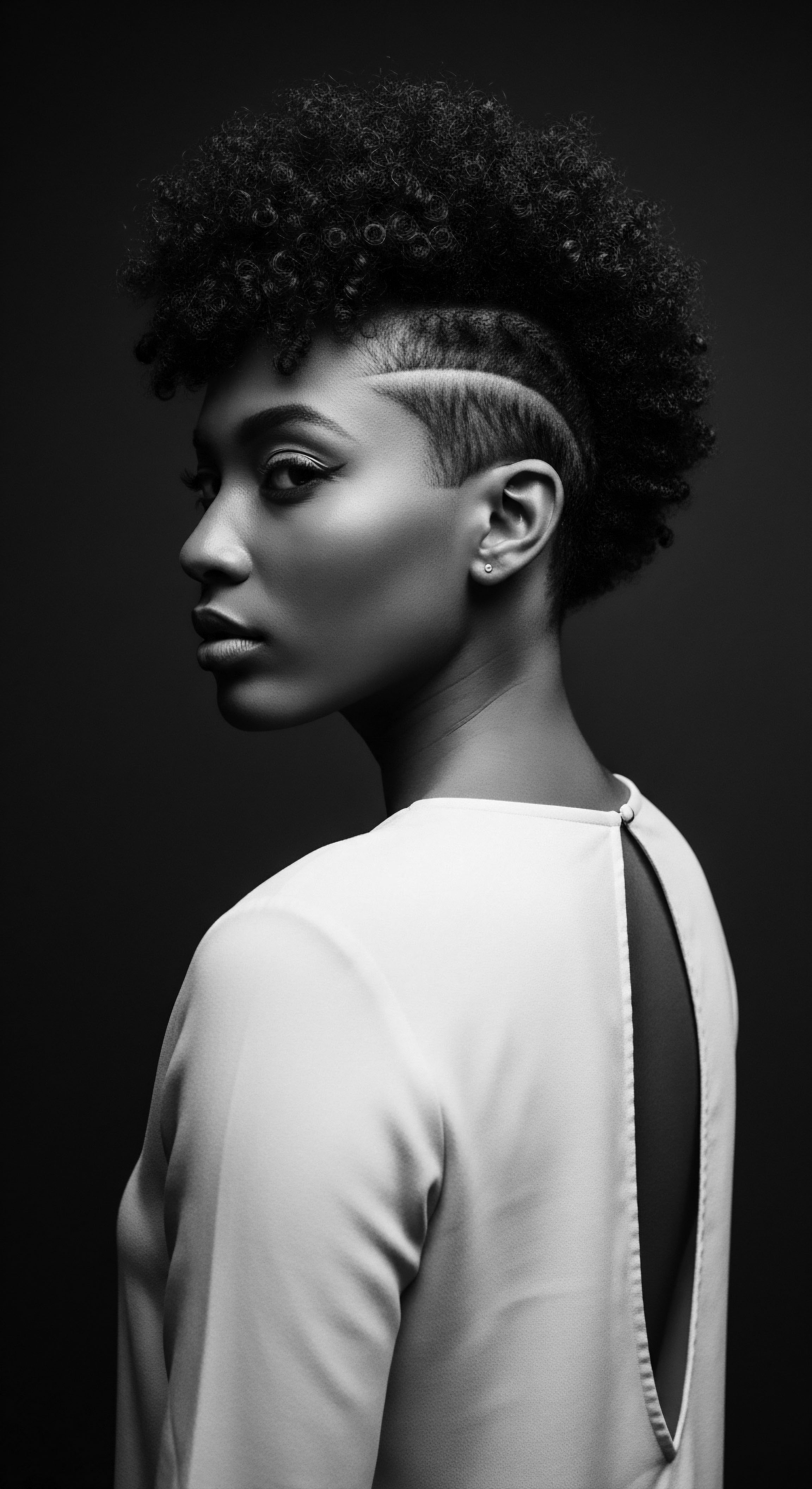
Natural Styling and Defining Techniques
Beyond the more complex protective styles, simpler techniques aimed at defining the hair’s natural curl patterns also contributed to moisture enhancement. These included methods of finger-coiling or palm-rolling damp hair, often after applying a hydrating botanical blend. This process helped to group individual strands into larger clumps, reducing surface area exposure and creating more defined, compact curls that naturally held moisture better.
The act of definition became a form of sealing, trapping the hydration applied during the wash or misting process. These techniques also fostered less manipulation throughout the week, as the defined styles held their form, requiring only minimal refreshing.

Historical Uses of Wigs and Hair Extensions
The practice of wearing wigs and hair extensions also holds ancient roots, particularly in African heritage, extending beyond mere adornment. In many instances, these additions served as protective measures, allowing the wearer’s natural hair to rest, grow, and retain moisture underneath. Ancient Egyptians, for example, wore elaborate wigs made from human hair or plant fibers, often infused with scented oils and resins. These wigs provided insulation against the sun and dust, and the underlying natural hair could be kept oiled and protected.
While perhaps not always for moisture in the direct sense of hydration, the preservation of the natural hair underneath from environmental aggressors indirectly supported its health and ability to retain its own moisture when exposed. The cultural significance varied, but the practical benefits of reduced exposure and manipulation for the hair beneath remained consistent.

Tools and Their Role in Moisture Preservation
The tools of ancestral hair care were extensions of natural resources and communal ingenuity. Wide-toothed combs crafted from wood or bone, and even the skilled use of fingers, were gentle on fragile, damp strands, minimizing breakage during detangling. Less breakage means more hair length to retain moisture. Specific application tools, perhaps carved scoops or smoothed gourds, might have been used to measure and distribute nourishing oils and butters evenly across the hair and scalp.
The very simplicity of these tools meant that manipulation was often slower, more deliberate, and less likely to cause the kind of mechanical damage that compromises the hair’s cuticle and leads to moisture loss. The intention behind the tool, its construction, and the manner of its use all played a part in supporting hair’s moisture.
Traditional hair care was a collective artistry, where hands and tools worked in harmony to secure moisture through protection and deliberate shaping.
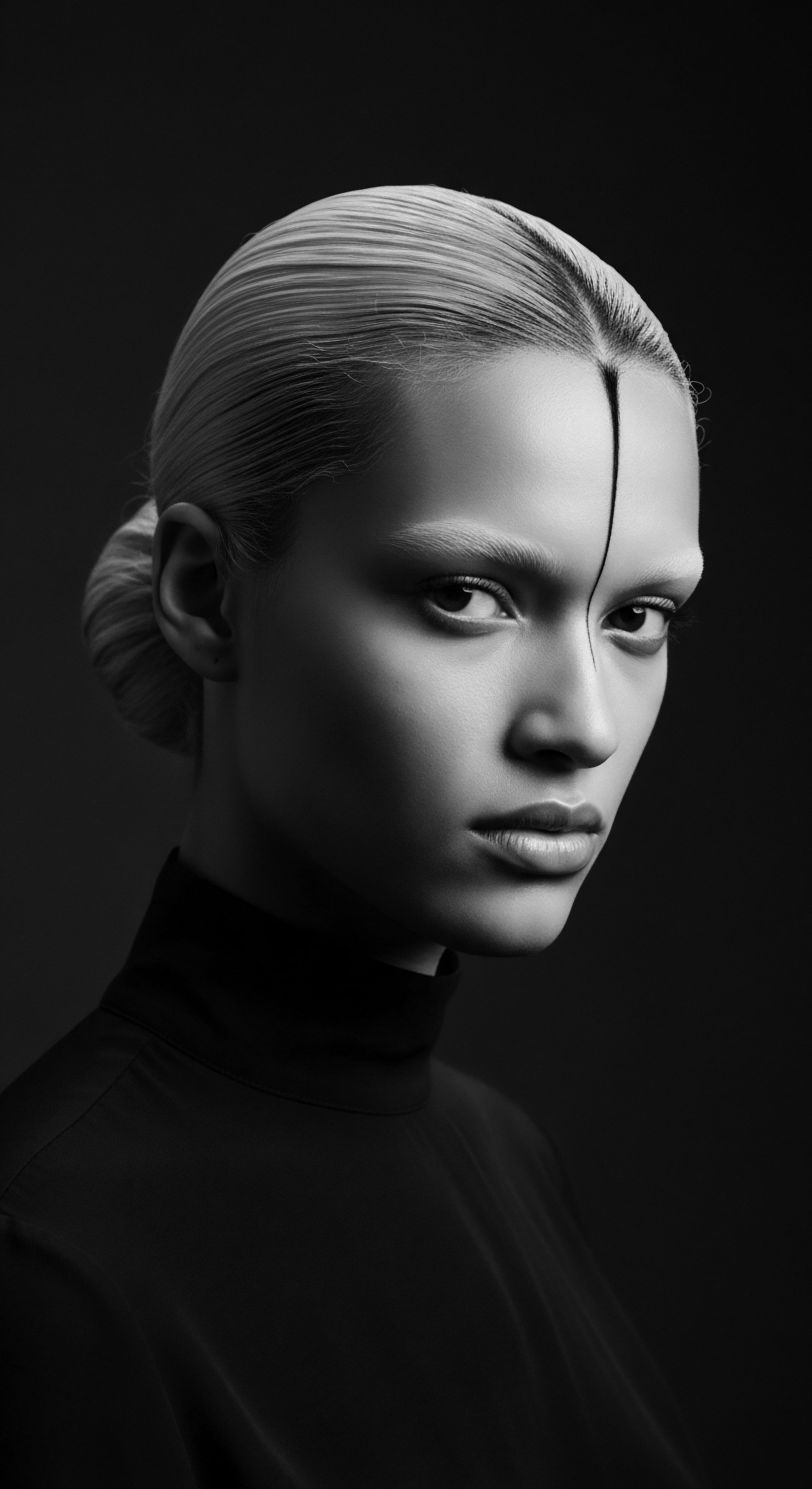
Relay
The continuation of ancestral knowledge concerning textured hair care is not a static preservation but a dynamic relay, a living wisdom adapted and reaffirmed through time. It is a dialogue between the old ways and the new, where the core principles of moisture retention and holistic health, passed down through generations, still guide contemporary practices. This deep understanding of heritage provides not only a historical context but a practical blueprint for maintaining the vitality of textured hair today, drawing from the elemental generosity of nature and the ingenuity of human hands.

Building Personalized Textured Hair Regimens from Ancestral Wisdom
At the heart of ancestral moisture techniques lies the principle of working with the hair’s unique qualities, not against them. Modern regimens for textured hair often seek to mimic this personalized approach, recognizing that no two heads of hair are exactly alike, even within similar curl patterns. Ancestral practices understood this implicitly, tailoring treatments based on an individual’s specific hair needs, climate, and lifestyle. This meant selecting particular botanical oils, applying specific styling methods, or choosing certain protective wraps that yielded the best results for a given person.
The focus was on consistent, gentle care that honored the hair’s natural inclination. Today, this translates to customizing product choices, wash frequencies, and styling routines to align with individual hair porosity, density, and elasticity, much as our forebears would intuitively adapt their care based on direct observation.

The Nighttime Sanctuary ❉ Headwrap Wisdom and Hair Bonnets
The practice of covering the hair at night, now commonplace with silk or satin bonnets and scarves, carries deep ancestral roots, particularly for retaining moisture. Historically, headwraps were worn not only for cultural identity and social status but also for practical hair protection and moisture preservation. The material chosen for these wraps was crucial. Smooth fabrics, often derived from plant fibers, minimized friction between hair and coarser sleeping surfaces, thereby preventing mechanical damage and the evaporation of moisture.
This simple yet effective technique created a protective microclimate around the hair, allowing applied oils and butters to penetrate and seal without being absorbed by cotton pillowcases. This practice, passed through families and communities, shows a consistent, shared understanding of moisture care.
The wisdom of generations offers a powerful truth ❉ moisture for textured hair is not a luxury but a birthright, sustained by deep connection to earth and tradition.
A statistical reality, perhaps less cited in academic texts but widely accepted in communities with a heritage of textured hair, is the direct correlation between consistent nighttime hair protection and reduced breakage, which naturally supports length retention and, by extension, moisture levels. When hair breakage is minimized, the hair cuticle remains more intact, better able to hold hydration. The act of wrapping hair nightly safeguards against the environmental stressors of daily life, extending the life of styled hair and limiting the need for frequent manipulation or washing, both of which can strip precious moisture.
Consider the anecdotal evidence across diaspora communities ❉ grandmothers, mothers, and aunties who instinctively reached for a silk scarf or custom-sewn bonnet before bed, imparting this ritual as a silent lesson in hair preservation. This continuity of practice, even as materials evolved from traditional cloths to modern satin, signifies the enduring value placed on nighttime protection for hair health and moisture.
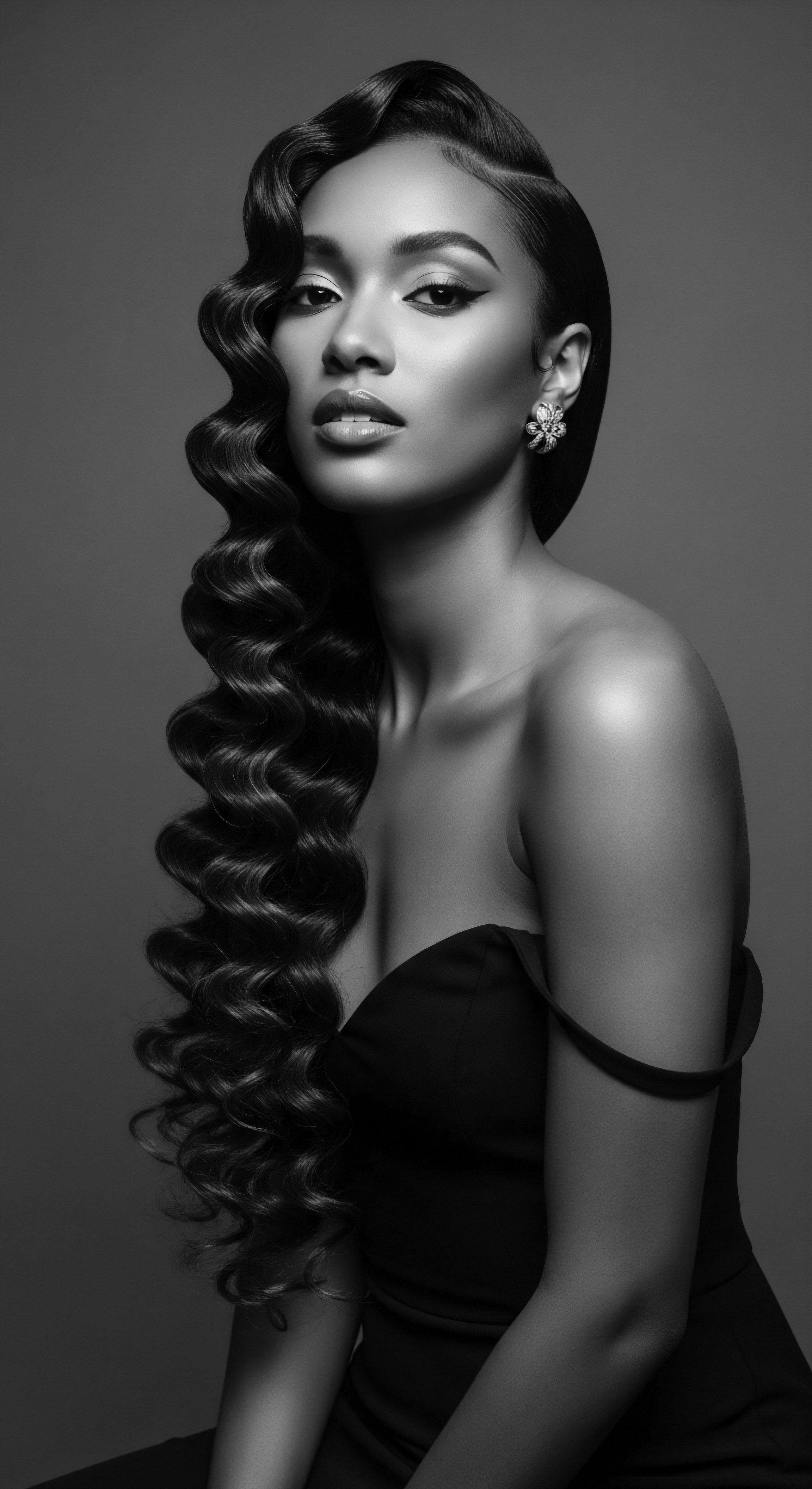
Ingredient Deep Dives for Textured Hair Needs
Ancestral communities relied upon a botanical pharmacopoeia for hair health, intuitively understanding the properties of various plants and natural fats. These ingredients, locally sourced and often processed by hand, were the cornerstones of their moisture-enhancing techniques.
- Shea Butter ❉ From the shea tree native to West and Central Africa, shea butter has been used for over 3,000 years for skin and hair care. Its rich concentration of vitamins A, E, and F, along with fatty acids, provides deep moisture and protection against environmental drying. Communities have used it for hair nourishment and to protect against sun and wind.
- Palm Kernel Oil ❉ Also originating from West Africa, palm kernel oil, sometimes referred to as African Batana oil, contains lauric acid, vitamins A and E, and other fatty acids. It was traditionally used for deep conditioning, stimulating growth, and reducing dryness.
- Coconut Oil ❉ A staple in many tropical regions, including parts of Africa and South Asia, coconut oil has been historically utilized for its ability to penetrate the hair shaft, reducing protein loss and providing significant moisture. Its widespread use in Ayurvedic practices for hair health dates back centuries.
- Chebe Powder ❉ Hailing from the Basara Arab women of Chad, this blend of herbs (including lavender crotons, stone scent, and cloves) is applied to hair and braided to seal in moisture, promote length retention, and increase hair thickness.
These natural butters and oils were not simply applied; they were often warmed, massaged into the scalp and strands, sometimes left overnight, creating a deeply conditioning treatment. The emphasis was on sealing moisture into the hair, rather than merely coating it. This careful application ensured the emollients could truly benefit the hair shaft, mirroring the scientific understanding of occlusive agents today.
| Aspect Moisturizing Agents |
| Ancestral Practice Shea Butter, Palm Kernel Oil, Coconut Oil directly from plants. |
| Modern Parallel/Understanding Commercial leave-in conditioners and hair butters with similar natural lipid profiles. |
| Aspect Application Method |
| Ancestral Practice Warm oil massages, hand-applied butters, communal grooming rituals. |
| Modern Parallel/Understanding Deep conditioning treatments, hot oil treatments, L.O.C. (Liquid-Oil-Cream) method. |
| Aspect Protection |
| Ancestral Practice Braids, Twists, Headwraps for daily and nighttime wear. |
| Modern Parallel/Understanding Protective styles (box braids, twists), silk/satin bonnets and pillowcases. |
| Aspect Cleansing |
| Ancestral Practice Herbal rinses, natural clays, infrequent washing to preserve natural oils. |
| Modern Parallel/Understanding Sulfate-free shampoos, co-washing, clarifying treatments, gentler cleansers. |
| Aspect The enduring efficacy of ancestral techniques speaks to a deep, inherent understanding of textured hair's moisture needs, persisting through time. |

Addressing Hair Challenges with Heritage Solutions
Ancestral communities faced challenges like dryness, breakage, and scalp irritation, much like today. Their problem-solving was integrated into daily care. For dry hair, they would increase the frequency of oil and butter applications, perhaps adding specific humectant-rich plants. For scalp conditions, herbal infusions and natural clays were used to cleanse and soothe without stripping.
The emphasis was always on gentle, consistent nourishment rather than harsh interventions. This comprehensive approach, combining preventive measures with responsive treatments, formed the backbone of their moisture-enhancing strategies, ensuring hair health was maintained across all conditions.

Holistic Influences on Hair Health
Hair health was intrinsically linked to overall wellbeing in ancestral philosophies. Diet, spiritual practices, and community harmony all played a part. Consuming nutrient-rich foods, often directly from the land, provided the internal building blocks for strong hair. The connection to the earth, the respect for natural cycles, and the communal nature of grooming reinforced a holistic view where hair was a reflection of inner balance.
This perspective, often lacking in modern, product-centric approaches, reminds us that true moisture retention begins from within and is supported by a lifestyle aligned with natural rhythms. The legacy of these practices is a call to reconnect with the broader ecosystem of wellness, where hair care is but one facet of a deeply interconnected existence.
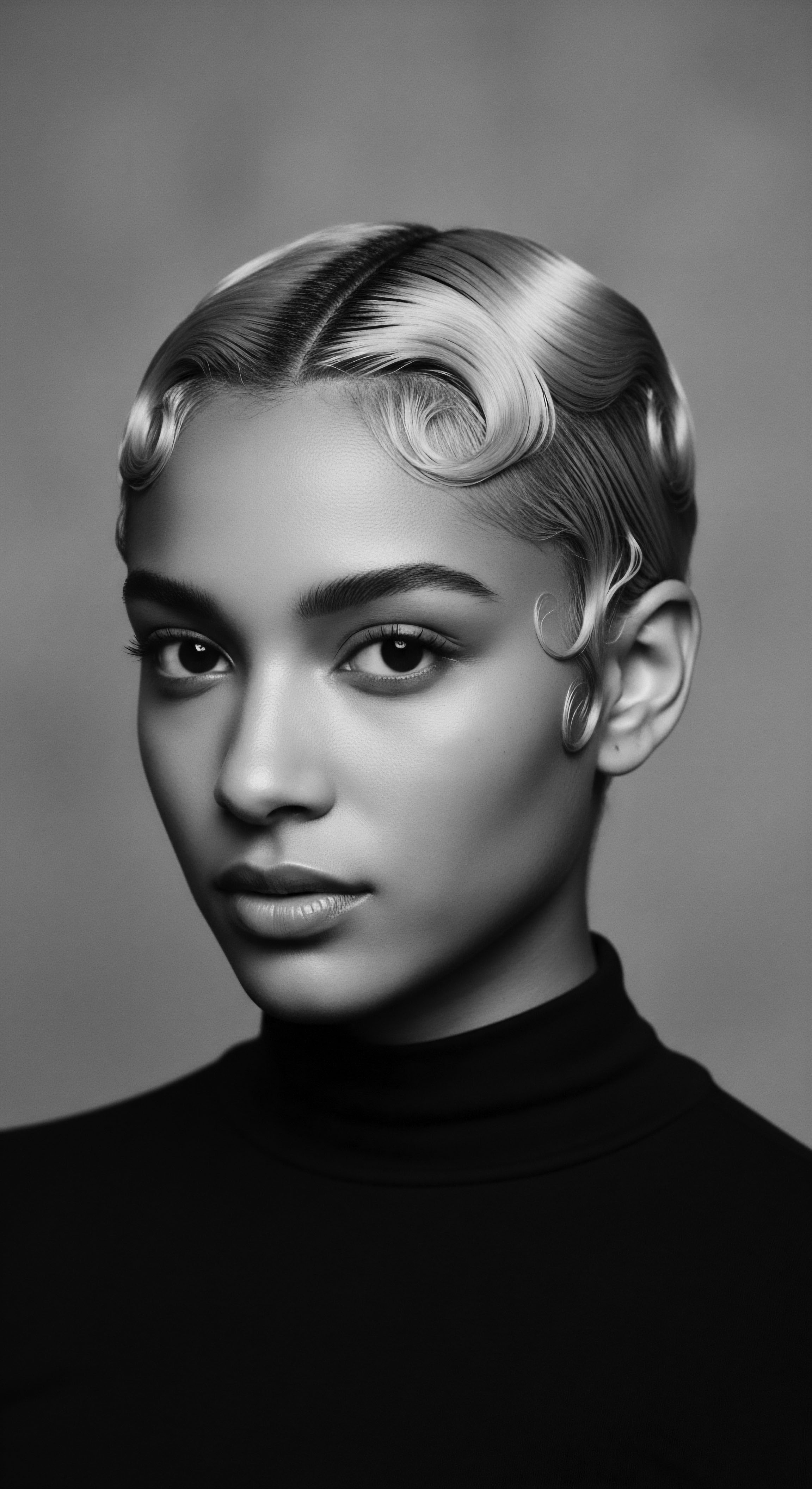
Reflection
As we trace the echoes of ancestral wisdom through the story of textured hair and its enduring quest for moisture, a compelling truth emerges ❉ care for our strands is far more than a routine; it is a living, breathing archive. Each technique, every chosen botanical, carries within it the spirit of those who came before us, a testament to their ingenuity, their resilience, and their profound connection to the natural world. This historical journey reveals that the desire for soft, well-hydrated hair is not a fleeting trend but a deeply rooted aspect of heritage, a thread that binds generations across continents and centuries.
The practices of our forebears were not haphazard experiments; they were precise, intuitive responses to the elemental biology of textured hair and the environmental realities of their lives. They understood, with a wisdom honed by observation and communal learning, that protective styles conserved vitality, that rich natural butters sealed in life-giving hydration, and that gentle handling preserved the strand’s inherent strength. This legacy calls us to a deeper appreciation of our hair, not as something to be tamed or altered, but as a sacred extension of self, deserving of reverence and intelligent, heritage-informed care.
The ‘Soul of a Strand’ ethos, indeed, finds its deepest resonance here. It invites us to listen to the whispers of history in our styling rituals, to feel the hands of our ancestors in the very act of nourishing our hair. It is a call to reclaim a holistic perspective, recognizing that the health of our hair is intertwined with our environment, our community, and our inner balance.
In a world that often seeks to separate us from our origins, embracing these ancestral techniques for moisture becomes an act of defiant self-acceptance, a celebration of inherited beauty, and a powerful reaffirmation of identity. The journey of textured hair is, after all, an unbound helix, continually unwinding new pathways while always holding fast to the wisdom of its deep and vibrant past.

References
- Adeleke, Y. (2019). The History of Black Hair. Harvard University Press.
- Barnett, C. (2014). African Ethnobotany ❉ A Cultural History of Botanical Use. Cambridge University Press.
- Carney, J. A. & Rosomoff, R. (2009). In the Shadow of Slavery ❉ Africa’s Botanical Legacy in the Atlantic World. University of California Press.
- Chernoff, J. M. (1979). African Rhythm and African Sensibility. University of Chicago Press.
- Gittens, S. C. (2018). Textured Hair ❉ An Exploration of Culture, Science, and Care. Black Hair Press.
- Kiburi, W. (2020). Hair Narratives ❉ A Social and Cultural History of Black Hair. Afrikan Publishing.
- Miller, K. (2022). The Hidden Science of Textured Hair ❉ A Guide to Its Unique Needs and Care. Natural Hair Journal.
- Opoku, A. (2015). African Traditional Hair Care ❉ Practices and Ingredients. Cultural Insights Publishing.
- Walker, A. J. (2013). The Science of Hair ❉ A Comprehensive Guide. Beauty & Science Publications.
- Williams, E. (2017). Black Hair ❉ A History of Hair in African American Culture. University of Mississippi Press.
